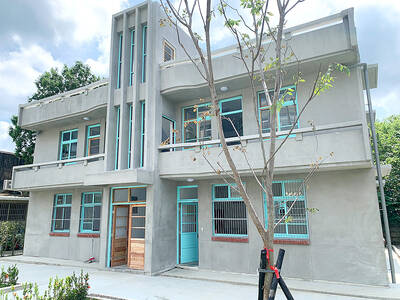Ballroom dance may be a mainstay in Taiwan, but a variety of new dance classes are spicing up the social dance scene in Taipei.
Catering to both the local and foreign communities, with classes in English and Chinese, several dance studios in Taipei are now offering salsa, tango, hip-hop and swing.

PHOTO COURTESY OF TAIWAN YOSEIKAN BODU
"Salsa is becoming quite popular in Taiwan. A lot of places are starting to hire live Latin bands and there seems to be a big salsa community emerging here," said Godfrey Zwygart, a director and instructor at Taiwan Yoseikan Bodu, a martial-arts center in Tienmu.
Hoping to cash in on the recent rise in popularity of Latin-style dance, the Yoseikan center has employed professional instructors to teach salsa, flamenco and belly dancing. "These are natural and sexy dances. People like to get dressed up and go out to the clubs and dance. The girls really love it," Zwygart said.
While beginner-level classes in flamenco get underway this coming Wednesday, both belly dance and salsa began last week. However, interested persons can still register and -- if demand permits -- additional classes will be added later.
Elsewhere in the city, well-established studios such as Wu Yi (
Classes at Wu Yi are open to the public and the center encourages people to drop by the studio and observe a class before making any commitments. It offers a wide range of classes from classical Chinese to salsa and caters to all levels, but English instruction is not always available. For some, however verbal language is nonessential to a good dance lesson.
"You don't need language. You just need to watch what the instructor does and follow, you can use body language to learn," Chiang said.

June 2 to June 8 Taiwan’s woodcutters believe that if they see even one speck of red in their cooked rice, no matter how small, an accident is going to happen. Peng Chin-tian (彭錦田) swears that this has proven to be true at every stop during his decades-long career in the logging industry. Along with mining, timber harvesting was once considered the most dangerous profession in Taiwan. Not only were mishaps common during all stages of processing, it was difficult to transport the injured to get medical treatment. Many died during the arduous journey. Peng recounts some of his accidents in

“Why does Taiwan identity decline?”a group of researchers lead by University of Nevada political scientist Austin Wang (王宏恩) asked in a recent paper. After all, it is not difficult to explain the rise in Taiwanese identity after the early 1990s. But no model predicted its decline during the 2016-2018 period, they say. After testing various alternative explanations, Wang et al argue that the fall-off in Taiwanese identity during that period is related to voter hedging based on the performance of the Democratic Progressive Party (DPP). Since the DPP is perceived as the guardian of Taiwan identity, when it performs well,

The Taiwan People’s Party (TPP) on May 18 held a rally in Taichung to mark the anniversary of President William Lai’s (賴清德) inauguration on May 20. The title of the rally could be loosely translated to “May 18 recall fraudulent goods” (518退貨ㄌㄨㄚˋ!). Unlike in English, where the terms are the same, “recall” (退貨) in this context refers to product recalls due to damaged, defective or fraudulent merchandise, not the political recalls (罷免) currently dominating the headlines. I attended the rally to determine if the impression was correct that the TPP under party Chairman Huang Kuo-Chang (黃國昌) had little of a

A short walk beneath the dense Amazon canopy, the forest abruptly opens up. Fallen logs are rotting, the trees grow sparser and the temperature rises in places sunlight hits the ground. This is what 24 years of severe drought looks like in the world’s largest rainforest. But this patch of degraded forest, about the size of a soccer field, is a scientific experiment. Launched in 2000 by Brazilian and British scientists, Esecaflor — short for “Forest Drought Study Project” in Portuguese — set out to simulate a future in which the changing climate could deplete the Amazon of rainfall. It is